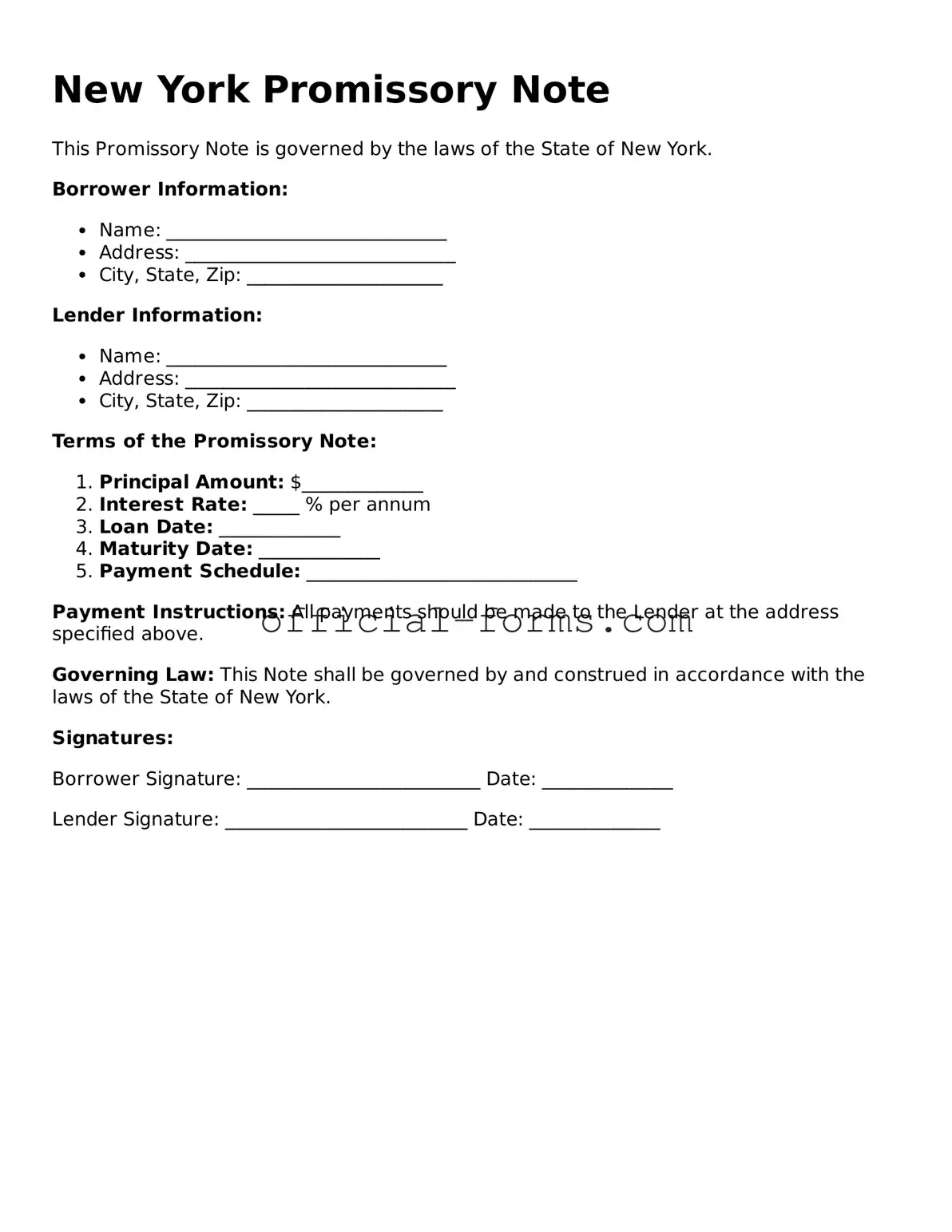When completing a New York Promissory Note form, individuals often make several common mistakes that can lead to confusion or legal issues down the line. One frequent error is failing to clearly state the amount of the loan. This figure should be precise, as any ambiguity can create disputes about the terms of repayment.
Another common mistake is neglecting to include the interest rate. If the note is meant to accrue interest, the rate should be clearly outlined. Without this information, it may be unclear how much the borrower will ultimately owe, which can lead to misunderstandings between the parties involved.
People sometimes forget to specify the repayment schedule. Whether payments are due monthly, quarterly, or on another schedule, this detail is crucial. A lack of clarity in the repayment terms can result in missed payments and potential legal complications.
Additionally, many individuals overlook the importance of including the due date for the final payment. This date marks the end of the loan agreement and should be clearly stated to avoid any confusion about when the loan must be fully repaid.
Another mistake is failing to include the names and addresses of all parties involved. It is essential to provide complete and accurate information for both the lender and the borrower. This ensures that all parties can be easily identified and contacted if necessary.
Some people do not sign the document in the appropriate places. A Promissory Note must be signed by both the borrower and the lender to be legally binding. Omitting signatures can render the document invalid, leaving the lender without recourse if the borrower defaults.
Moreover, individuals may neglect to have the note witnessed or notarized. While not always required, having a witness or a notary public can provide an additional layer of security and legitimacy to the agreement. This can be particularly important in case of disputes.
Another common error is using vague language. The terms of the note should be clear and specific. Ambiguous language can lead to different interpretations of the agreement, which can complicate matters if a disagreement arises.
Finally, some individuals fail to keep a copy of the signed Promissory Note. It is essential for both parties to retain a copy for their records. This ensures that both the lender and borrower have access to the same information regarding the terms of the loan.
